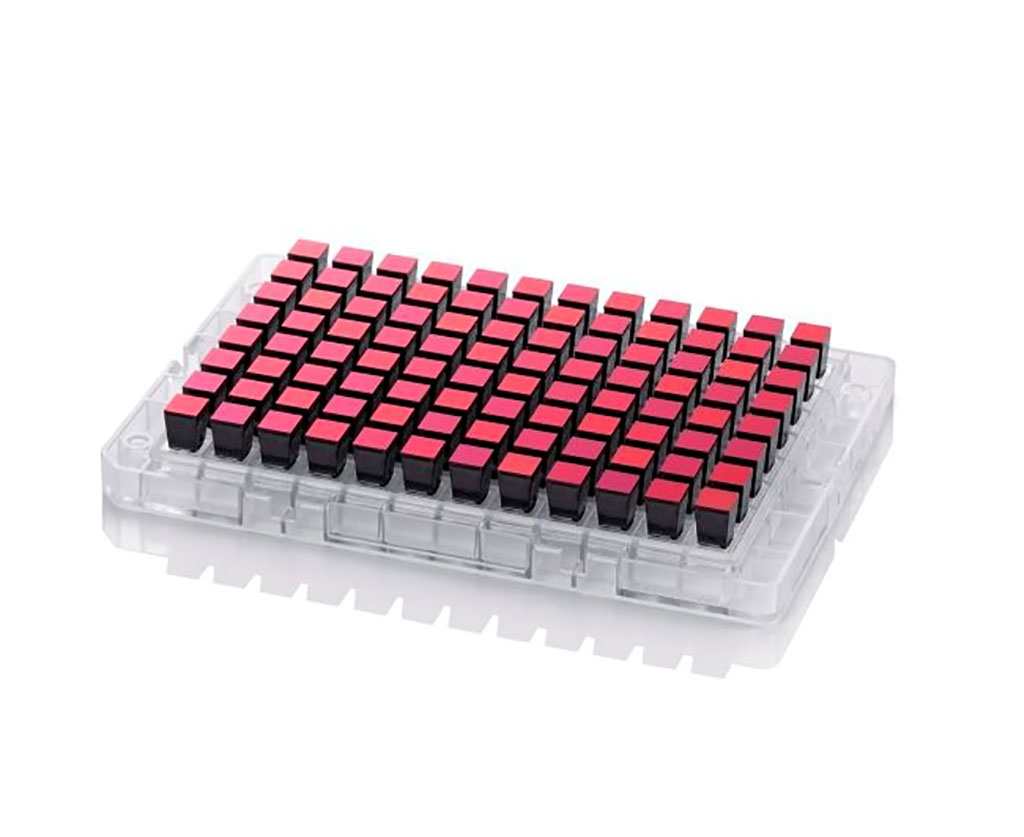Preemies' Blood Type Tied to Risk for Necrotizing Enterocolitis
By LabMedica International staff writers
Posted on 21 Jul 2021
Necrotizing enterocolitis (NEC) and focal intestinal perforation (FIP) are two of the most common emergencies of the gastrointestinal tract in preterm infants with very low birth weight (VLBW). The etiology and pathogenesis of NEC and FIP remain poorly understood.Posted on 21 Jul 2021
Although FIP and NEC have been recognized as distinct entities, the clinical features and timing of presentation are frequently overlapping, making both diseases clinically indistinguishable in many cases. NEC typically occurs in infants born between 22 and 28 weeks of gestation within the second or third week of life. The gestational age of children developing FIP ranges between 22 and 27 weeks with intestinal perforation occurring within the first or second week of life.

Image: Axiom Genome-Wide Population-Optimized Human Arrays are genotyping panels that offer the best genetic coverage of rare and common variants for genome-wide disease association studies (Photo courtesy of Thermo Fisher Scientific)
Pediatricians at the University of Leipzig (Leipzig, Germany) and their colleagues enrolled in a prospective cohort study infants with a birth weight below 1,500 grams and gestational age below 37 weeks from 43 participating tertiary German neonatal intensive care units. The study included 10,257 infants with very low birth weight, 441 of whom required surgery for NEC/FIP. Data were collected from every infant on important maternal, fetal, and neonatal parameters, including maternal ethnic origin, sex, singleton versus multiple births, fetal malformation, pharmacological or surgical treated patent ductus arteriosus (PDA), sepsis, bronchopulmonary dysplasia (BPD), intraventricular hemorrhage (IVH), periventricular leukomalacia (PVL).
Patients’ data and samples were coded before genotyping and analysis. DNA was extracted using standard protocols for commercial DNA purification kits (Gentra Puregene Tissue Kit, Qiagen, Hilden, Germany). Chip genotyping was done by using ‘Axiom CEU’ (Affymetrix, Santa Clara, CA, USA) or by using ‘Global Screening Array (GSA)’ (Illumina, San Diego, CA, USA). The ABO gene was determined according to two SNPs (rs8176746 and rs8176719).
The team reported that most infants had type A blood (46.5%), followed by type O (34.5%), type B (13%), and type AB (6%). In regards to birth weight, mode of delivery, gestational age, gender, and corticosteroid exposure, no differences were reported according to blood type. Most infants had an average gestational age of 28.5 weeks, and the average birth weight was 1,051 grams for the AB blood group and 1,037 grams for the non-AB group. NEC/FIP requiring surgery was observed in 6.2% of infants with AB blood versus 4.2% of those with non-AB blood and 4.4% of those with type O blood. Mortality from NEC/FIP was 7.7% for the AB blood type group and 6.8% for the non-AB blood groups.
The authors concluded that they had demonstrated that among VLBW infants, blood group AB is associated with an increased risk of NEC/FIP. Therefore, blood group AB may be considered as an additional risk factor for NEC/FIP. The underlying mechanism of the blood group AB in NEC/FIP development, including potential interactions between intestinal bacteria and histo-blood group antigens (HBGAs) needs to be further elucidated. The study was published on July 2, 2021 in the journal Nature Scientific Reports.
Related Links:
University of Leipzig
Qiagen
Affymetrix
Illumina













